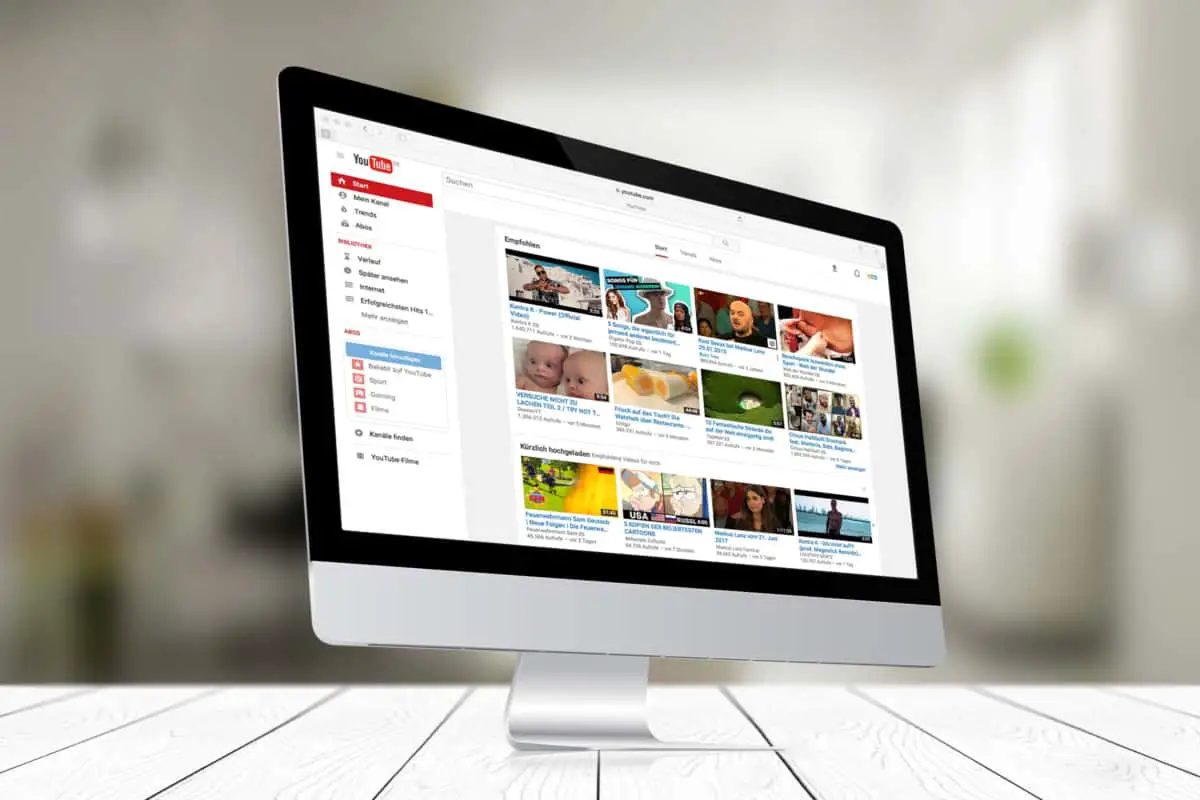One thing every comedian aspires to get — an interested and engaged audience. YouTube brings these to you in the form of viewers. We’ve seen so many instances where a single video, or a single clip, ends up making a person famous overnight. While that is an entirely plausible dream, your main goal should always be to create and publish content that you feel proud of promoting you as a comedian. This should be content that shows your comedic style and talent.
Too often, comedians limit their ideas as to what they can achieve through YouTube.YouTube is a secure platform to use, but garnering viewership remains a struggle. Often comedians are concerned about wasting material, getting jokes stolen, or not getting booked. While these can be valid, there are a lot of positives that can come from YouTube, so here are some tips to get you started with your channel.
Strategize
Before starting a channel, you need to think about the kind of content you’d be publishing on it. They don’t all have to be clips of your stand up, and in fact, you should try your hand at other content that is not stand up related like hobbies, politics, and pop culture. The frequency in which you’ll upload videos to the channel, how much time you can dedicate to it weekly or per day. When you’ve answered all these questions, map out your approach to increase viewership.
That can include sharing videos on other social media platforms like Facebook, Twitter, and Instagram, or posting them on Reddit threads. The more outreach you have on such platforms, the stronger and faster your channel will grow. Providing value and entertainment is the easiest way to do so; this is called infotainment and is a core strategy of most YouTubers.
After you’ve come up with the strategy, you need to come up with a username, display picture, and a cover picture that best describes your work. That would help you target and attract your audiences. For example, if you’re a stand up comedian, you could put up your photo, or your caricature as your display picture. This is the first thing people see, so make sure the picture is clear and gives an accurate reflection of the image you want to convey.
The argument against YouTube is that you don’t want material online that is subpar. If you feel like your material is worth somebody else’s time spent watching it, then you should put it up, but if it is weak with lousy video and audio, wait until you have better material.
Some comedians that if they post their sets on YouTube, they cannot do those jokes anymore. This is not true; clips bring eyes, and eyes can bring fans. If you build a following large enough to sell tickets to people who want to see YOU, then you have traded a bit of material for a following. And having a following is insanely valuable not only to you but to the places that book you. However, to ‘make it’ you NEED a following, and that’s impossible to get if the only people who hear your jokes are the people seeing you live.
Also, YouTube is the new late night. People do 5-minute sets on there all the time, most of which end up on YouTube and still use those jokes in their hour. Some people even get shows because of YouTube, like Lilly Singh, who has a talk show on NBC called A Little Late With Lilly Singh.
Content Creation
Depending on the type of comedy you intend to do, your channel needs to be tailored according to that. If you aim to target a specific audience, for example, sketches of shows and movies such as GoT, Harry Potter, etc. When your audience belongs to a particular fandom, your content should be accurate, and you should make sure that you share your video links amongst that fandom through different mediums, as discussed previously.
Garnering viewership for a channel aimed at a particular fandom usually takes more time to build. If you are a stand up comedian, you need to share your sets but don’t post the same bits over and over. Comedians like AGT’s Preacher Lawson started breaking down their sets into individual bits and labeling them, which made them easy to watch and added production value.
Make comedic sketches that resonate with the masses. While creating a video of you performing on-stage, don’t forget to capture the audience’s reaction to your jokes. The best way to accumulate views on a video is by making sketches about current topics and trends. The faster you are, the better you attract viewers. However, this should not be your only strategy. Finding your voice and niche on YouTube is just as important as finding your voice in stand up.
While creating the content, make sure that you adhere to YouTube’s guidelines. Try to avoid controversial topics at first. If you have a half-hour long show, post it in parts under different titles, preferably keeping the duration in the range of 5-7 minutes. Do proper editing before publishing your videos as it helps retain the viewers’ interest.
Publishing Videos
The first and foremost thing while publishing videos is the video and audio quality. These two things have to be on point; otherwise, no one would bother watching a video they can hardly comprehend. So, make sure that your video and audio is clear and devoid of disturbances. Your video should at least be of 480p resolution, but 1080p is preferable. Don’t work about 4k or 8k or anything like that as most people won’t know the difference, and you’re not Christopher Nolan anyway.
The title of the video should be catchy but not misleading. Click-baiting might seem to help for a bit, but in the longer run, it only ruins the reputation of your channel. Keep the title shorter than 16 words, so the full title is included in searches. Searching YouTube for other videos in your similar genre will help you come up with a title that will grab the types of viewers that will consume your content.
Another thing to keep in mind during publishing is tags. Keep the tags appropriate to the video, and don’t include more than 15 tags, as it’s observed that videos don’t show up in searches at all if you add too many tags. Too many people think tags are the best way to grab viewers in searches.
It is an excellent practice to add closed captions to your video, as it assists in providing clarity, and can also be enjoyed by people who prefer watching things on mute. Not only do closed captions allow those who can’t listen to enjoy your comedy, but it will also allow those who may be hearing or otherwise impaired be able to enjoy your content increases the number of people in your audience.
Provide a funny albeit informative description below your video, and add links to your social media accounts as well. Provide a little exclusive content for your viewers on these social media accounts so that your audience is interested in following your work there as well. Urge everyone to subscribe to your channel as it helps a lot in the long run.
Be Active
Remain in touch with your subscribers and viewers. Take their reviews and comments into account. Make sure to let them know that you care about their opinions and pay heed to whatever criticism they provide on your performances.
Discover other comedic channels, and share your opinions about their work, while urging them to check your channel and do the same. It gives a sense of camaraderie and might even help you make some long-lasting friends! You can guest on someone’s sketch, or invite someone to your videos, as it provides you with new opportunities.
While YouTube is not the only way to get your videos to viewers, you should focus on building your following and pushing fans to your website or other social media. Having fans that will consume content off the platform will boost your engagement overall, leading to more views and opportunities to get subscribers.
Research
Watch other comedians and see that there is no repetition in your content concerning them. Watch for trending topics/videos, and try to capture their essence in your work. Investigate and look into the things people most search the most relevant tags, which will help you come up with ideas for new content that will have more chances at increased viewership. With the ability of comedians to find their niche and share their comedy with millions of people, YouTube is a great outline to build your career.
Several comedians have grown because of YouTube. One of the biggest is Bo Burham, who became famous on YouTube in 2006. In 2006, Burnham videotaped himself performing two songs and posted them on YouTube to share with his family. They quickly became famous through YouTube, Break.com, and other sites allowing him to break out quickly. Burham has over 1.6 million subscribers and over 260 million views.
The most known among the comedy community is Steve Hoffstetter. Hofstetter gained a reputation by posting videos of interactions with audience members on YouTube, which garnered so many views that Fox Television offered him a series called Laughs, a half-hour showcase for standup comedians, which debuted in August 2014. Hoffstetter’s channel has over 500 thousand subscribers and over 140 million views.
Don’t give up
Getting a channel started is a tough venture. Don’t lose hope; don’t give up. Give it a couple of years to gather a certain amount of subscribers and an endless number of views. If you’re near that three thousand (3k views) mark in your first year, you’ve done a great job. It does take time to build a following initially, but after a while, with hard work, views and subscribers will grow. Give your best in every video and performance.
Although the timeline for YouTube is really tough to know. The thing is that the YouTube algorithm is so good that you’re always one video away from gaining traction and views. One video that pops could drive tens of thousands of subscribers.
What I would say is to not worry about subscriptions. Instead, focus on how many videos an average release gets in the first week. Notice the metric of “views in the first seven days” for an average video. The reason the focus is so much on that is because it shows how many people are active with your channel now. These are your real fans.
If in your first four months, you can get to the point that you consistently get hundreds of views on a video in the first seven days, you’re on track. You’re gaining traction, and at a point where enough people see your videos that the algorithm has data to work with, that helps determine if it should show the video to a broader audience.
It might seem exhausting, but YouTube brings you closer to the audiences and allows people to appreciate your work. It provides you exposure among fellow comedians and elevates the chances of you getting contacted for shows, writing, etc. Keep your work engrossing and stick true to your comedic style. Add teasers in your stories, up your game with witty replies to comments and criticism on your video. Incorporate your fans in your videos one way or the other to grow fan base.

